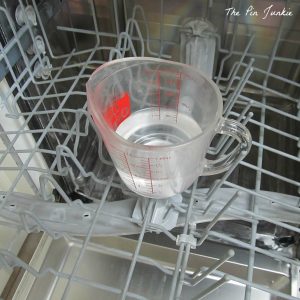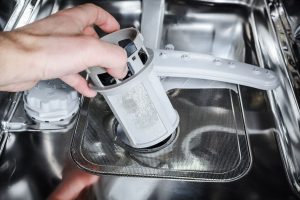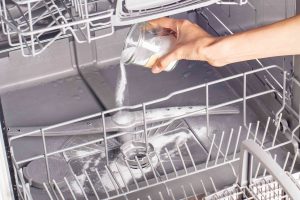Spring Cleaning is Here! Organize and Declutter Your Home Today.
For a long time, I did not consider the need to clean my dishwasher. At first glance, it may appear unnecessary since the appliance routinely washes dishes; however, this does not ensure that the dishwasher itself remains clean. To address this misconception, I conducted research to better understand proper dishwasher maintenance. This is what I found.
Gather distilled white vinegar, dish soap, sponge, baking soda, toothpicks, microfiber cloths, a toothbrush, stainless steel or multi-purpose cleaner, and a screwdriver, hex wrench, or other appropriate tool (verify internal dishwasher screws if necessary).
Sanitize the dishwasher weekly by placing a cup of white vinegar on the top rack and running a cycle; this process assists in removing mineral deposits.
Clean the filter at least once per week to reduce food residue and odors.
Wipe the rubber door gasket and any detergent door grime with a damp towel to help maintain an effective seal.
Before each load, run the nearby faucet until hot water flows to support optimal cleaning and sanitize effectiveness.
Clean the spray arm monthly with a damp towel and remove blockages every six months with a toothpick for consistent performance.
Conduct a thorough cleaning of your dishwasher every one to two months for optimal performance.
Empty the Dishwasher: Upon completion of a wash cycle, fully unload the appliance. Carefully remove the racks, noting that in some models, only the bottom rack may be detachable.
Remove Removable Components: Identify and detach any parts designed for removal, such as the utensil basket and bottom spinning arm or disc. This step provides access to the grate and filter for detailed cleaning.
Inspect Spinning Arm/Disc Holes: Using needle-nose pliers, a toothpick, or an equivalent tool, clear any obstructions from the holes in the spinning arms or disc. If multiple arms are present, ensure each is thoroughly inspected and cleaned.
Clean All Components: Wash all extracted components with a sponge and warm, soapy water, paying particular attention to the filter.
Sanitize the Interior: Wipe down all interior surfaces—including the base, sides, and door—using a damp sponge. Be sure to clean the door seal thoroughly. 
Run an Empty Cycle with Vinegar: After reassembling all parts, pour two cups of vinegar into the dishwasher base and select a low or energy-saving cycle. Pause the cycle halfway through to allow the vinegar to sit for 20 minutes before resuming until completion, effectively removing mineral buildup and residue.
Polish the Exterior: For stainless steel models, use a stainless steel cleanser applied with a soft or microfiber cloth. Rinse as necessary. For best results, spray cleaner onto one towel and dry in the direction of the metal grain with a second, clean towel.
Proper maintenance of the rubber gasket is essential, as debris accumulation can impair sealing performance and reduce appliance lifespan. Adhere to the following steps:
Clean the Bottom of the Door: In certain models, debris may collect at the base where water does not reach. Remove it using a soft cloth or paper towel.
Clean the Door Seal: Dampen a cloth with vinegar to wipe around the door seal. For hard-to-reach areas, utilize a toothbrush or cotton swab also moistened with vinegar.
Filter Maintenance

The filter, typically located at the bottom center, collects food particles and other debris. It can usually be unscrewed for maintenance.
To clean the filter:
For ongoing care, sprinkle baking soda directly into the drain, followed by approximately one cup of white vinegar. Allow the solution to foam for 15 minutes, then run the machine’s hottest available cycle to flush out residual debris.
Given the propensity for food and debris accumulation in the utensil tray, remove and thoroughly clean it during every maintenance session, or more frequently if needed. Inspect stubborn particles and clean with a soapy toothbrush, dish brush, or sponge.